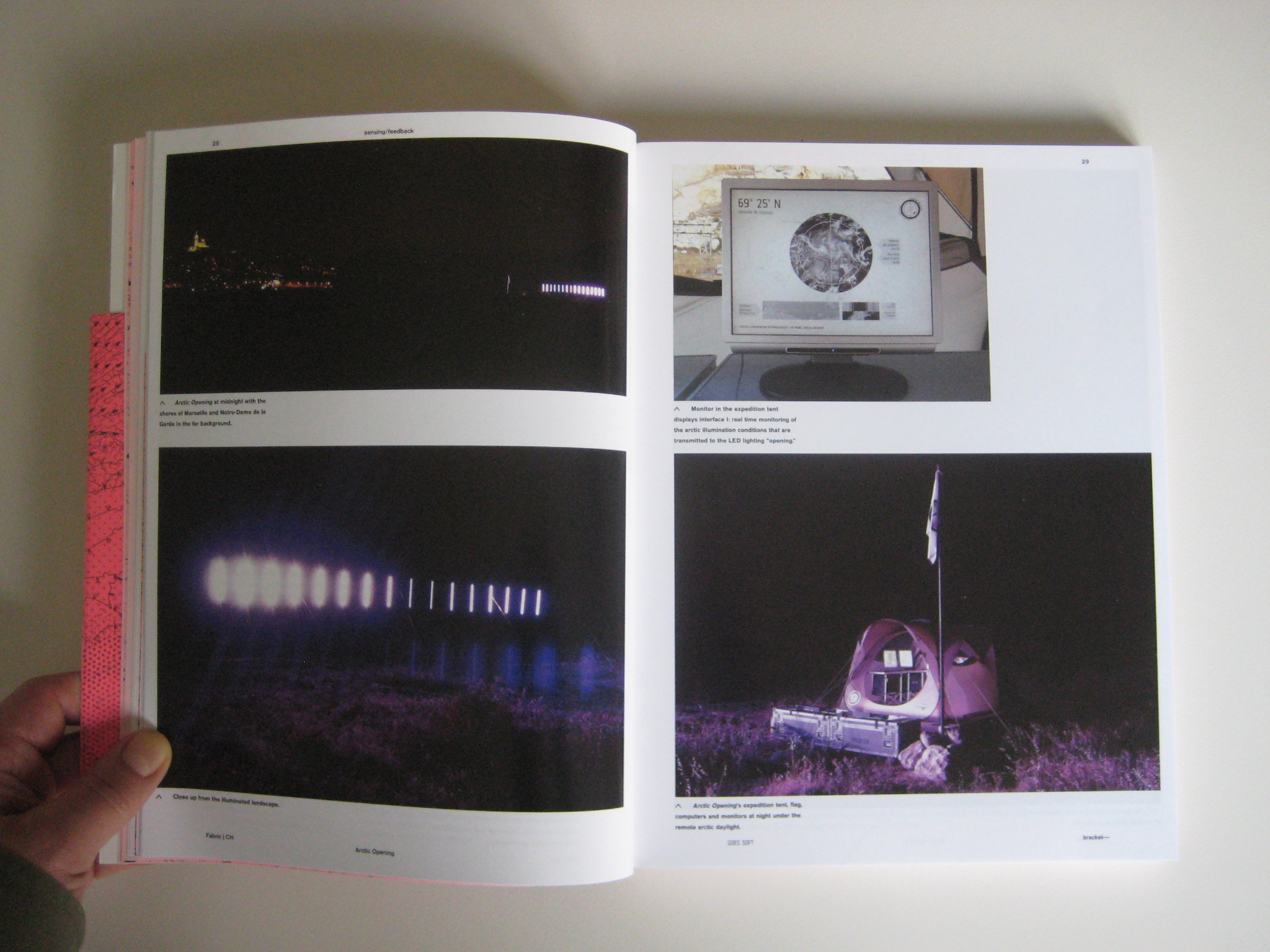Sticky Postings
By fabric | ch
-----
As we continue to lack a decent search engine on this blog and as we don't use a "tag cloud" ... This post could help navigate through the updated content on | rblg (as of 09.2023), via all its tags!
FIND BELOW ALL THE TAGS THAT CAN BE USED TO NAVIGATE IN THE CONTENTS OF | RBLG BLOG:
(to be seen just below if you're navigating on the blog's html pages or here for rss readers)
--
Note that we had to hit the "pause" button on our reblogging activities a while ago (mainly because we ran out of time, but also because we received complaints from a major image stock company about some images that were displayed on | rblg, an activity that we felt was still "fair use" - we've never made any money or advertised on this site).
Nevertheless, we continue to publish from time to time information on the activities of fabric | ch, or content directly related to its work (documentation).
Tuesday, October 05. 2021
Note: an interview about the implications of AI in art and the work of fabric | ch in particular, between Nathalie Bachand (writer & independant curator), Christophe Guignard and myself (both fabric | ch). The exchange happened in the context of a publication in the art magazine Espace, it was fruitful and we had the opportunity to develop on recent projects, like the "Atomized" serie of architectural works that will continue to evolve, as well as our monographic exhibition at Kunshalle Éphémère, entitled Environmental Devices (1997 - 2017).
-----
By fabric | ch



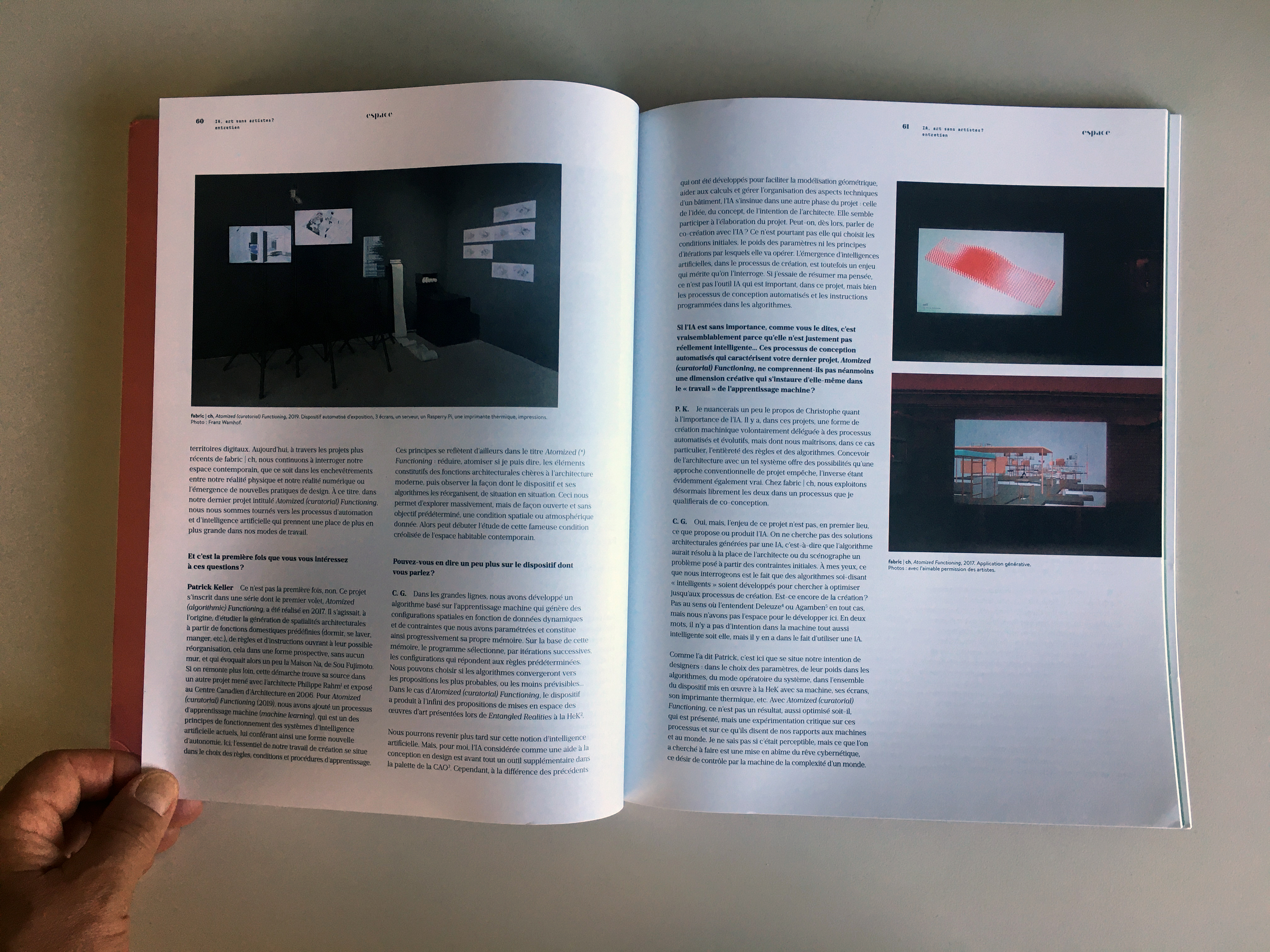

Wednesday, January 27. 2016
Via Motherboard (via @jospeh_grima)
-----

Screengrab: The Torist
Anonymity is a breeding ground, be that for debate, creativity, or exploration. So where better to publish a socially-conscious, digitally focused literary journal (.onion link) than on a Tor hidden service.
Edited by Robert W. Gehl, associate professor at the University of Utah's Department of Communication, and pseudonymous creator GMH, the first issue of The Torist, a collection of fiction, poetry and non-fiction, launched on the dark web over the weekend.
The project started on Galaxy, a social network on the dark web, around 18 months ago, the pair told Motherboard in encrypted chats. GMH and Gehl, who was using his own pseudonym at this point, were discussing issues around feminism and literature.
“At the time, I was quite enthused about Galaxy and the way this social network had a different atmosphere from other social networks I'd used on the clearweb,” GMH said. “I thought that this different atmosphere/demographic could translate into a 'zine with interesting results.” People on Galaxy, GMH said, seemed to be dissatisfied with being constantly monetized, and not having a sense of other places to go.
The editors pose several questions in a preface to the journal: “If a magazine publishes itself via a Tor hidden service, what does the creative output look like? How might it contrast itself with its clearweb counterparts? Who indeed will gravitate towards a dark web literary maagzine?”
Indeed, reading the contents of the journal together, “I see the anxieties of life in a surveillance state,” Gehl said.
Gehl, after being pitched the idea of The Torist by GMH, decided to strip away his pseudonym, and work on the project under his own name. “I thought about that for a while,” Gehl said. “I thought that because GMH is anonymous/pseudonymous, and he's running the servers, I could be a sort of ‘clear’ liason.”
So while Gehl used his name, and added legitimacy to the project in that way, GMH could continue to work with the freedom the anonymity awards. “I guess it's easier to explore ideas and not worry as much how it turns out,” said GMH, who described himself as someone with a past studying the humanities, and playing with technology in his spare time.
One of the main reasons for publishing on a Tor hidden service was to emphasise that such sites have plenty of other applications besides those they might be commonly known for, such as drug markets. “It's an intriguing idea—to swim against the current popular conceptions of anonymity and encryption,” Gehl said.
As for GMH, “I go into it hoping to highlight what Tor can be used for: which is a way of using the internet as you already do, except preserving your dignity and right not to have your private life interfered with.” “I believe communication, especially reading things on the internet, should be private by default and that that should only be interfered with in very exceptional circumstances,” he added.
At the moment, the pair are taking a break from The Torist, but future issues might be in the pipeline soon.
“We'll accept submissions all year round,” GMH said.
Monday, September 28. 2015
Note: a book as a follow up of the exhibition for which fabric | ch designed the scenography last May at the Haus der elektronische Künste in Basel (project White Oblique, downloadable pdf on our website). I was implicated in a double way in the exhibition due to the fact that the content of the design research I'm jointly leading with Nicolas Nova for ECAL and HEAD, Inhabiting and Interfacing the Cloud(s), was also exhibited. I have the pleasure to publish a text in the book about the state and objectives of the ongoing research as well.
Via iiclouds.org
-----
Note: we’re pleased to see that the publication related to the exhibition and symposium Poetics & Politics of Data, curated by Sabine Himmelsbach at the H3K in Basel, has been released later this summer. The publication, with the same title as the exhibition, was first distributed in the context of the conference Data Traces. Big Data in the Context of Culture and Society that also took place at H3K on the 3rd andf 4th of July.
The book contains texts by Nicolas Nova (Me, My cloud and I) and myself (Inhabiting and Interfacing the Cloud(s). An ongoing Design Research), but also and mainly contributions by speakers of the conference (which include the american theorician Lev Manovitch, curator Sabine Himmelsbach and Prof. researcher from HGK Basel Claudia Mareis) and exhibiting artists (Moniker, Aram Bartholl, Rafael Lozano-Hemmer, Jennifer Lyn Morone, etc.)










The publication serves both as the catalogue of the exhibition and the conference proceedings. Due to its close relation to our subject of research (the book speaks about data, we’re interested in the infrastructure –both physical and digital– that host them), we’re integrating the book to our list of relevant book. The article A short history of Clouds, by Orit Halpern is obviously of direct signifiance to our work.
It can be ordered directly from H3K website:
Poetics and Politics of Data, 265 pp, ed. Christoph Merian Verlag, Basel, 2015 (29.- chf)
Friday, August 14. 2015
Note: While being interested in the idea of the commune for some time now --I've been digging into old stories, like the ones of the well named Haight-Ashbury's Diggers, or the Droppers, in connection to system theory, cybernetics and information theory and then of course, to THE Personal Computer as "small scale technology" , so as to "the biggest commune of all: the internet" (F. Turner)--.
The idealistic social flatness of the communes, anarchic yet with inevitable emerging order, its "counter" approach to western social organization but also the fact that in the end, the 60ies initiatives seemed to have "failed" for different reasons, interests me for further works. These "diggings" are also somehow connected to a ongoing project and tool we recently published online, a "data commune": Datadroppers (even so it is just a shared tool).
Following this interest, I came accross this latest online publication by uncube (Issue #34) about the Commune Revisited, which both have an historic approach to old experiments (like the one of Drop City), and to more recent ones, up to the "gated community" ... The idea of the editors being to investigate the diversity of the concepts. It brings an interesting contemporary twist and understanding to the general idea... In a time when we are totally fed up with neo liberalism.
Via Uncube
-----
"One year after our Urban Commons issue, we're returning to the idea of the communal, this time investigating just how diversly the concept of "commune" can be interpreted - and not always with entirely benevolent intentions or successful results.
Wether trying to escape a broken economy or an oppressive system via new forms of existence or looking to break the system itself via anarchic methodologies, forming a commune traditionnaly involves segregation or stepping "outside" society.
But no matter how off-grid and back-to-nature the contemporary communities that we investigate here are, it turns out they are far more connected than we think.
Turn on, tune out, drop in.
The editors"



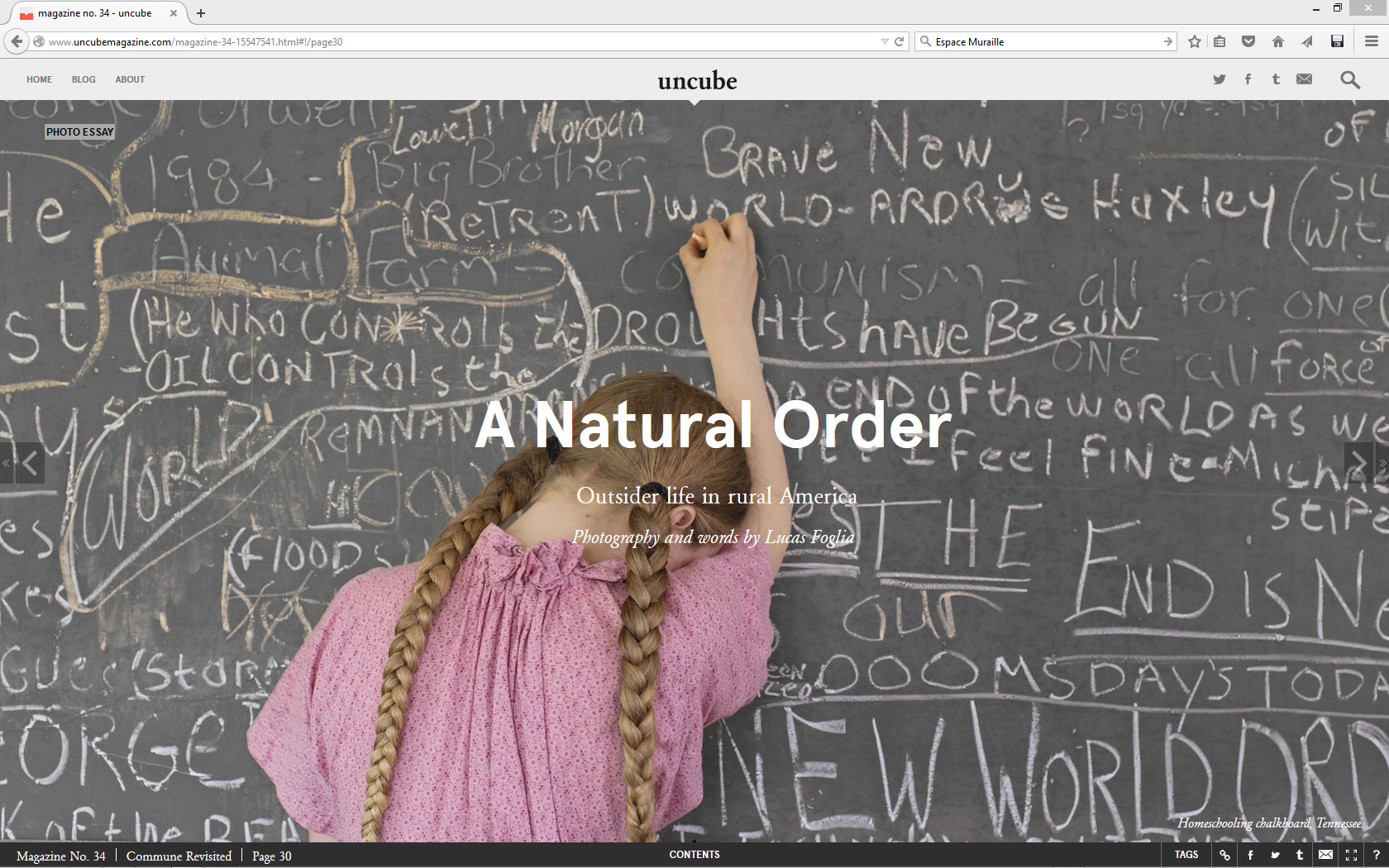

Wednesday, July 29. 2015
Note: after the recent post about E.A.T. and while we are into history, here is also an intersting article by Phyllis (Gershuny) Segura, one of the founders of the 1970's journal Radical Software, where she explains the birth and motivatiosn behind the magazine. It was a journal about the then very young video art, but exceeded this thematic by far, including avant-garde thematics such as cybernetic, information theory or networks.
Via Rhizome
-----
Creating Radical Software: A Personal Account
By Phyllis (Gershuny) Segura
What can be analyzed in my work, or criticized, are the questions that I ask…my composition arises out of asking questions.
— John Cage

Radical Software Volume I, Number 1: the Alternate Television Movement (Spring 1970)

Radical Software Volume I, Number 2: the Electromagnetic Spectrum (Autumn 1970).
As rare as it is for something to be an instant success, this is what happened with Radical Software, a journal started in 1970 to bring a fresh direction to communication via personal and portable video equipment and other cybernetic explorations. Its intention was to foster an alternative to broadcast media and lessen the impact of its control. I was the co-founder.
When I began conceiving of the journal, no one really knew precisely what I was getting at because my ideas about it were at an inchoate stage of development, making for loose coherency. The idea was for individuals to be able to communicate interactively without the filters of broadcast media. Even at a more formalized stage the process superseded any formulaic views. Perhaps asking non-hierarchical questions could materialize the structures leading to a two-way network for communicative exchange. Our choices were no longer determined by traditions and customs.
I don't often look, but when I do, I notice so much misinformation, both printed and online, about the origins of Radical Software. I‘d like to clarify what my role was then and what my inspiration was in conceiving of it. It is important to set the background and tone of events. In order to accurately tell the tale I will weave in some personal life anecdotes from the time. It's all one story to me, as the vicissitudes of life often direct our fates.
“Those were the underlying circumstances that led to Radical Software: curiosity and confinement.”
(...)
Read more about it HERE.
Monday, July 20. 2015
Note: an interesting handmade book initiative by Garnet hertz around the makers movement, from their critical point of view. Not critical thinking or design therefore, but critical make. I would even prefer to say "make thinking"!
Via Critical Making
-----

"Critical Making is a handmade book project by Garnet Hertz that explores how hands-on productive work ‐ making ‐ can supplement and extend critical reflection on technology and society. It works to blend and extend the fields of design, contemporary art, DIY/craft and technological development. It also can be thought of as an appeal to the electronic DIY maker movement to be critically engaged with culture, history and society: after learning to use a 3D printer, making an LED blink or using an Arduino, then what?"
...
The entire collection can be downloaded on the website.
Friday, January 16. 2015
Note: we didn't found enough time last December to document an interview of fabric | ch that was publish in the French design magazine Étapes. So let's do it in early 2015... The magazine itself has been recently revamped under the direction of a new editorial board. It is now a quite exciting magazine, interested in transverval approaches to design questions, including interaction design, architecture, etc. even so its main and historical focus remains graphic design.
The interview that took place between Christophe Guignard (fabric | ch) and Isabelle Moisy (editor in chief, Étapes) concerns the specific approach to architectural design that fabric | ch has adopted through times. This approach has taken into account since our foundation (1997) the networked and digital natures of contemporary space and territories (landscapes) combined with the physical one. This last point was particularly evident in the fact that since the start, our group was composed of architects and computer scientists. Our work has of course evolved since 1997, but this "coded/data dimension" of space has obviously gained importance in our work and in general since then, it has also proved itslelf to become a major element in the conceptualization of spaces in our still early century.
By fabric | ch
-----
From the "Édito":
"(...). En l'absence d'horizon précis, les supports de communication se superposent, et les designers débordent sans complexe des pratiques restrictives auxquelles ils ont été formés. Les qualificatifs se multiplient. Designer pluriel, transdiciplinaire. (...)". Isabelle Moisy


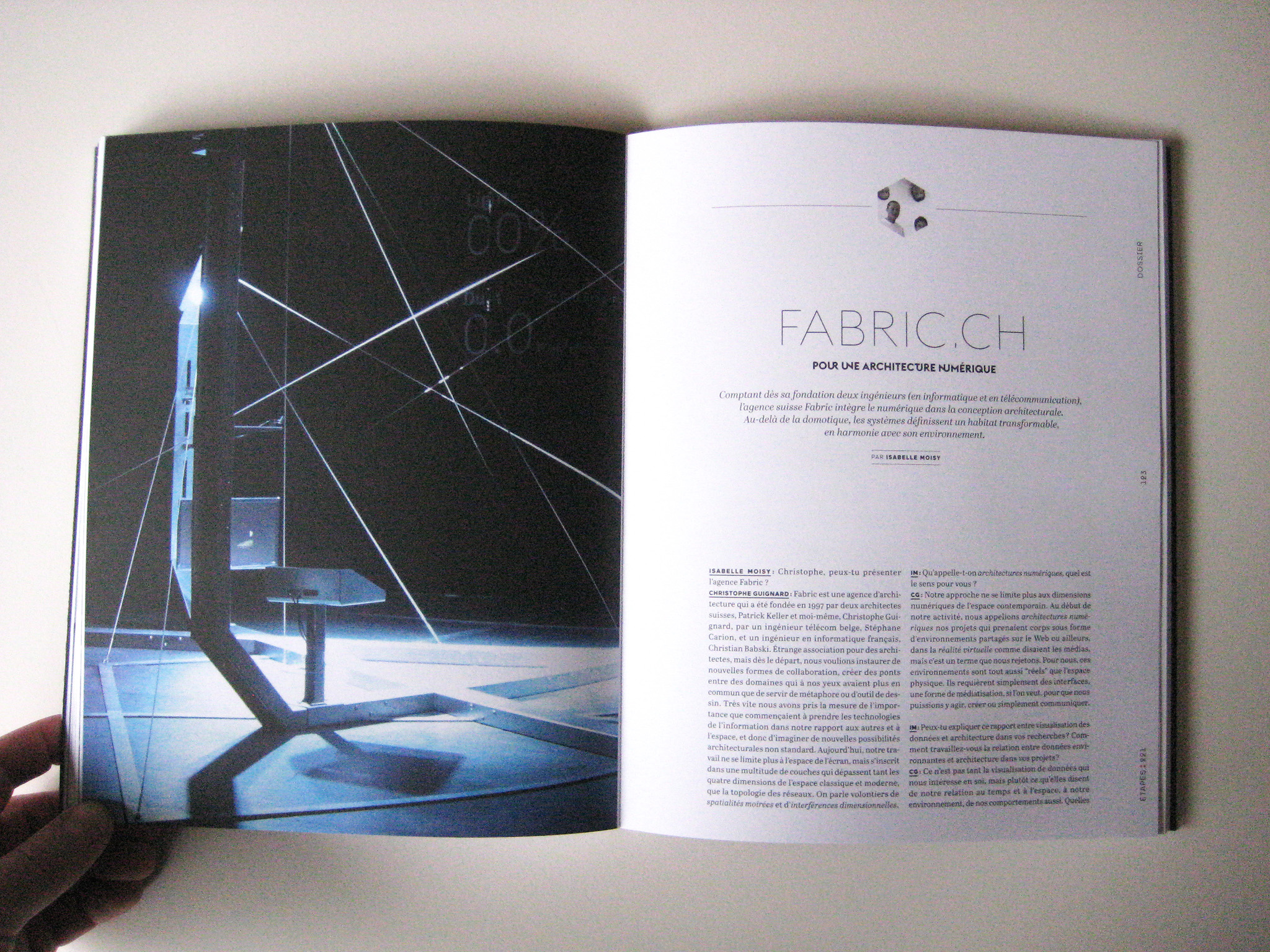
Paranoid Shelter (2012) on the left, used as a "theatrical/architectural device" during Eric Sadin's Globale Surveillance theatrical.

Gradientizer (2013) on the right. A competition project realized in collaboration with spanish architects Amid.cero9.

A recent project, Deterritorialized Living (2013) an almost geo-engineered troposhere delivered in the form of data flows. Installed here during Pau's Festival Accè(s) (cur. Erwan Chardronnet).
Wednesday, October 08. 2014
Note: a few of our recent works and exhibitions are included in this promising young publication related to architectural thinking, Desierto, edited by Paper - Architectural Histamine in Madrid. At the editorial team invitation, I had the occasion to write a paper about Deterritorialized Living and one of its physical installation last year in Pau (France), during Pau Acces(s). We also took the occasion of the publication to give a glimpse of a related research project called Algorithmic Atomized Functioning.
By fabric | ch
-----
From the editorial team:
"The temperature of the invisible and the desacralization of the air. 28° Celsius is the temperature at which protection becomes superfluous. It is also the temperature at which swimming pools are acclimatised.
Within the limits of the this hygrothermal comfort zone, we do not require the intervention of our body's thermoregulatory mechanisms nor that of any external artificial thermal controls in order to feel pleasantly comfortable while carrying out a sedentary activity without clothing.
28° Celsius is thus the temperature at which clothing can disappear, just as architecture could."
.jpg)

.jpg)
Authors are Gabriel Ruiz-Larrea, Sean Lally, Philippe Rahm, Nerea Calvillo, myself, Helen Mallinson, Antonio Cobo, José Vella Castillo and Pauly Garcia-Masedo.
.jpg)
Editorial by gabriel Ruiz-Larrea (editor in chief). Editorial team composed of Natalia David, Nuria Úrculo, María Buey, Daniel Lacasta Fitzsimmons.
.jpg)
.jpg)
.jpg)

.jpg)
Inhabiting Deterritorialization, by Patrick Keller, with images of Deterritorialized Living website, Deterritorialized Daylight installation (Pau, France) and Algorithmic Atomized Functioning.
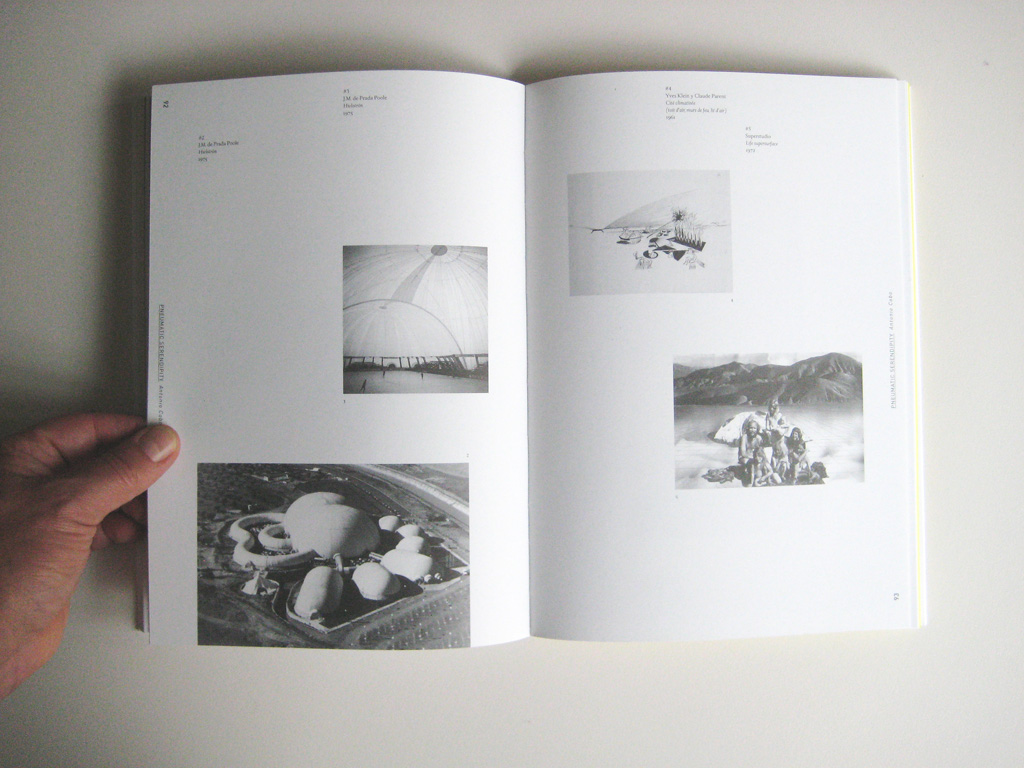
Desierto #3 and past issues can be ordered online on Paper bookstore.
Tuesday, January 15. 2013
|





























.jpg)

.jpg)
.jpg)
.jpg)
.jpg)
.jpg)

.jpg)




